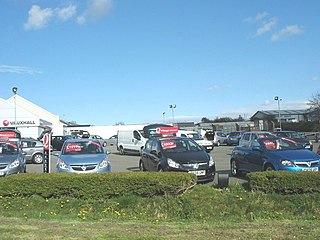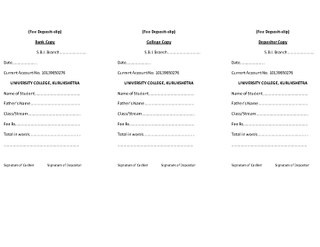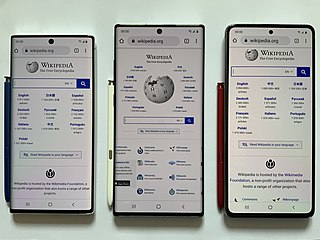Related Research Articles

"The Market for 'Lemons': Quality Uncertainty and the Market Mechanism" is a widely cited seminal paper in the field of economics which explores the concept of asymmetric information in markets. The paper was written in 1970 by George Akerlof and published in the Quarterly Journal of Economics. The paper's findings have since been applied to many other types of markets. However, Akerlof's research focused solely on the market for used cars.

A fee is the price one pays as remuneration for rights or services. Fees usually allow for overhead, wages, costs, and markup. Traditionally, professionals in the United Kingdom receive a fee in contradistinction to a payment, salary, or wage, and often use guineas rather than pounds as units of account. Under the feudal system, a Knight's fee was what was given to a knight for his service, usually the usage of land. A contingent fee is an attorney's fee which is reduced or not charged at all if the court case is lost by the attorney.

Text messaging, or texting, is the act of composing and sending electronic messages, typically consisting of alphabetic and numeric characters, between two or more users of mobile devices, desktops/laptops, or another type of compatible computer. Text messages may be sent over a cellular network or may also be sent via satellite or Internet connection.

Binary Runtime Environment for Wireless was an application development platform created by Qualcomm, originally for code division multiple access (CDMA) mobile phones, featuring third-party applications such as mobile games. It was offered in some feature phones but not in smartphones. First developed in 1999, as a platform for wireless applications on CDMA-based mobile phones, it debuted in September 2001. As a software platform that can download and run small programs for playing games, sending messages, and sharing photos, the main advantage of Brew MP was that the application developers can easily port their applications among all Brew MP devices by providing a standardized set of application programming interfaces. Software for Brew MP-enabled handsets can be developed in C or C++ using the freely downloadable Brew MP software development kit (SDK). The BREW runtime library is part of the wireless device on-chip firmware or operating system to allow programmers to develop applications without needing to code for system interface or understand wireless applications. BREW is described as a pseudo operating system, but not a true mobile operating system. BREW was not a virtual machine such as Java ME, as it runs code natively.

LG Electronics Inc. is a South Korean multinational major appliance and consumer electronics corporation headquartered in Yeouido-dong, Seoul, South Korea. LG Electronics is a part of LG Corporation, the fourth largest chaebol in South Korea, and often considered as the pinnacle of LG Corp with the group's chemical and battery division LG Chem. It comprises four business units: home entertainment, mobile communications, home appliances & air solutions, and vehicle components. LG Electronics acquired Zenith in 1995 and is the largest shareholder of LG Display, the world's largest display company by revenue in 2020. LG Electronics is also the world's second largest television manufacturer behind Samsung Electronics. The company has 128 operations worldwide, employing 83,000 people.

Fido Solutions Inc. is a Canadian mobile network operator owned by Rogers Communications. Since its acquisition by Rogers in 2004, it has operated as a Mobile virtual network operator (MVNO) using the Rogers Wireless network.

A prepaid mobile device, also known as a pay-as-you-go (PAYG), pay-as-you-talk, pay and go, go-phone, prepay or burner phone, is a mobile device such as a phone for which credit is purchased in advance of service use. The purchased credit is used to pay for telecommunications services at the point the service is accessed or consumed. If there is no credit, then access is denied by the cellular network or Intelligent Network. Users can top up their credit at any time using a variety of payment mechanisms.

Virgin Plus is a Canadian provider of postpaid and prepaid wireless voice, text and data communications services throughout Canada. They also offer home Internet and TV services in select areas of Ontario and Quebec. Launched as Virgin Mobile Canada on March 1, 2005, as a joint venture between Virgin Group and BCE Inc., BCE took sole ownership on July 1, 2009, when it closed a deal to purchase the stake it did not already own. Virgin Plus calls its customers 'Members' and offers a Member Benefits program, which provides its customers with special offers, discounts, and VIP experiences.

T9 is a predictive text technology for mobile phones, originally developed by Tegic Communications, now part of Nuance Communications. T9 stands for Text on 9 keys.
Mobile marketing is a multi-channel online marketing technique focused at reaching a specific audience on their smartphones, feature phones, tablets, or any other related devices through websites, e-mail, SMS and MMS, social media, or mobile applications. Mobile marketing can provide customers with time and location sensitive, personalized information that promotes goods, services, appointment reminders and ideas. In a more theoretical manner, academic Andreas Kaplan defines mobile marketing as "any marketing activity conducted through a ubiquitous network to which consumers are constantly connected using a personal mobile device".

Solo Mobile is a discontinued mobile virtual network operator in Canada started by Bell Mobility in 2000. Historically, Solo was considered a discount wireless brand, offering low price monthly plans with some unlimited options in certain cities. Its products and services were only sold in British Columbia, Alberta, Ontario and Quebec. The brand ceased advertising towards new customers since November 2011, and new activations were officially discontinued on May 17, 2012.

Richard Adams Cordray is an American lawyer and politician who is the outgoing COO of Federal Student Aid in the United States Department of Education. He served as the first director of the Consumer Financial Protection Bureau (CFPB) from 2012 to 2017. Before that, Cordray variously served as Ohio's attorney general, solicitor general, and treasurer. He was the Democratic nominee for governor of Ohio in 2018. The Biden administration has announced Cordray's departure in June 2024 following a chaotic rollout of changes to the FAFSA student aid application form.
In economic literature, the term "aftermarket" refers to a secondary market for the goods and services that are 1) complementary or 2) related to its primary market goods. In many industries, the primary market consists of durable goods, whereas the aftermarket consists of consumable or non-durable products or services.
A mobile campaign is a campaign, usually marketing, advertising, or public relations-related, through which organizations contact their audience through SMS. This form of campaigning allows organizations to reach out and establish relationships with an audience in a more individualized, intimate way. The foundational function of mobile campaigns is regularly referred to as mobile marketing. A campaign's goal can have varied consumer consumption objectives including flashing, informing or engaging. Mobile campaigns have developed from the periphery of advertising to being an integral part of an effective marketing strategy. Online advertising is the second largest advertising spend at $113 billion, next to television's $196.5 billion. Near the introduction of mobile campaigns, they were primarily created to boost the impact of primary campaigns. A good example of one of the first mobile campaigns is the viewer voting system employed in American Idol. Using the American Idol example, the primary campaign was television, and the engagement was mobile, “watch this show, and text to vote”. In 2012, there were over 131 million votes in a single night, setting the world mobile voting record. With over 90% of Americans having cell phones, and there being over 6.8 billion cell phones in circulation globally versus 2.4 billion with internet access, mobile campaigns are evolving to be the way of the future in advertising and consumer engagement.

The LG enV2 was a Verizon Wireless digital messaging feature phone manufactured by LG. It was available in standard black as well as maroon. Both the colors were available at Verizon Wireless in the U.S., and Telus stores and Koodo stores in Canada, and were released on the same date. It was also capable of installing VZ Navigator. The original price of the phone at release was $129 after a $50 mail-in-rebate. It had dropped to $79.99, and then to $49.99, but as of February 2009, the price had returned to $129.99. Best Buy stores used to offer the enV² for a price of $49.99 with a 2-year contract. After June 2012, a data plan for the phone was optional.
The form factor of a mobile phone is its size, shape, and style, as well as the layout and position of its major components.
The LG Rumor 2 and LG Script is a Sprint, Bell Mobility, Solo Mobile, Virgin Mobile USA and Virgin Mobile Canada feature phone manufactured by LG Electronics. It is available in black titanium, vibrant blue, purple, gray, and orange. The phones are offered by Sprint in Black, Blue, and Orange and were released in March 2009. The regular price of the phone is $249.99.

Andrews McMeel Syndication is an American content syndicate which provides syndication in print, online and on mobile devices for a number of lifestyle and opinion columns, comic strips and cartoons and various other content. Some of its best-known products include Dear Abby, Doonesbury, Ziggy, Garfield, Ann Coulter, Richard Roeper and News of the Weird. A subsidiary of Andrews McMeel Universal, it is headquartered in Kansas City, Missouri. It was formed in 2009 and renamed in January 2017.
Consumer confusion is a state of mind that leads to consumers making imperfect purchasing decisions or lacking confidence in the correctness of their purchasing decisions.

A phablet is a mobile device combining or straddling the size formats of smartphones and tablets. The word is a portmanteau of phone and tablet. The term is largely obsolete by the late 2010s, since average smartphone sizes eventually morphed into small tablet sizes, up to 6.9 inches (180 mm), with wider aspect ratios.
References
- ↑ Adams, Scott (1997). Dilbert Future, The (1st ed.). United Feature Syndicate. p. 159. ISBN 0-88730-866-X.
- 1 2 Larsen, Jakob Eg; Kristensen, Kristian; Edwards, Reuben; Coulton, Paul (2008), Mobile Users: Comparing Trends in Denmark and Britain
- ↑ Cordray, Richard (Jan 8, 2014), Richard Cordray Extended Interview pt. 2